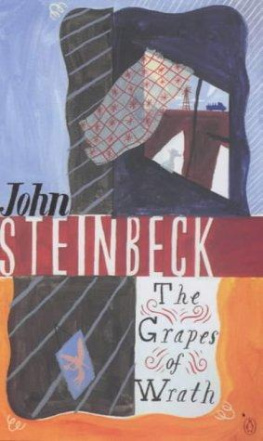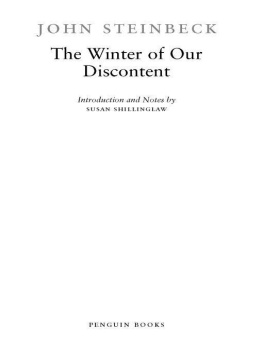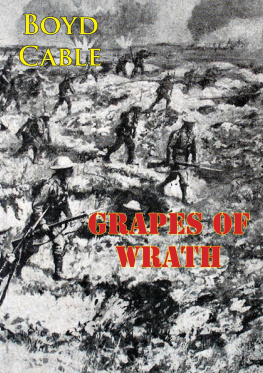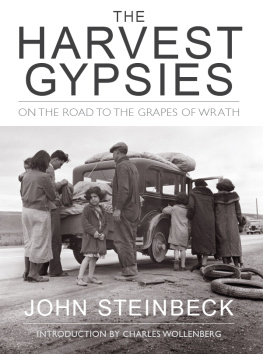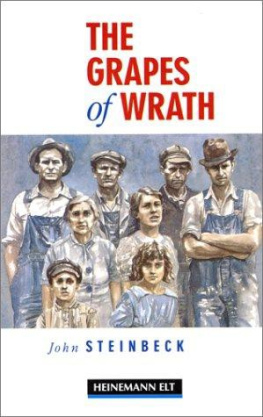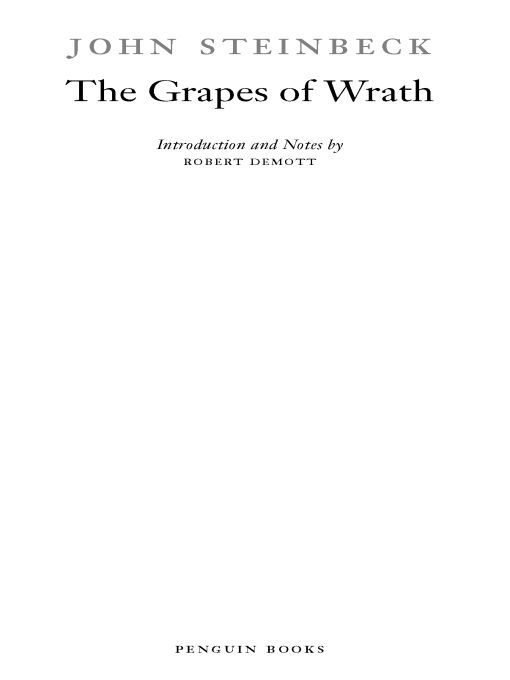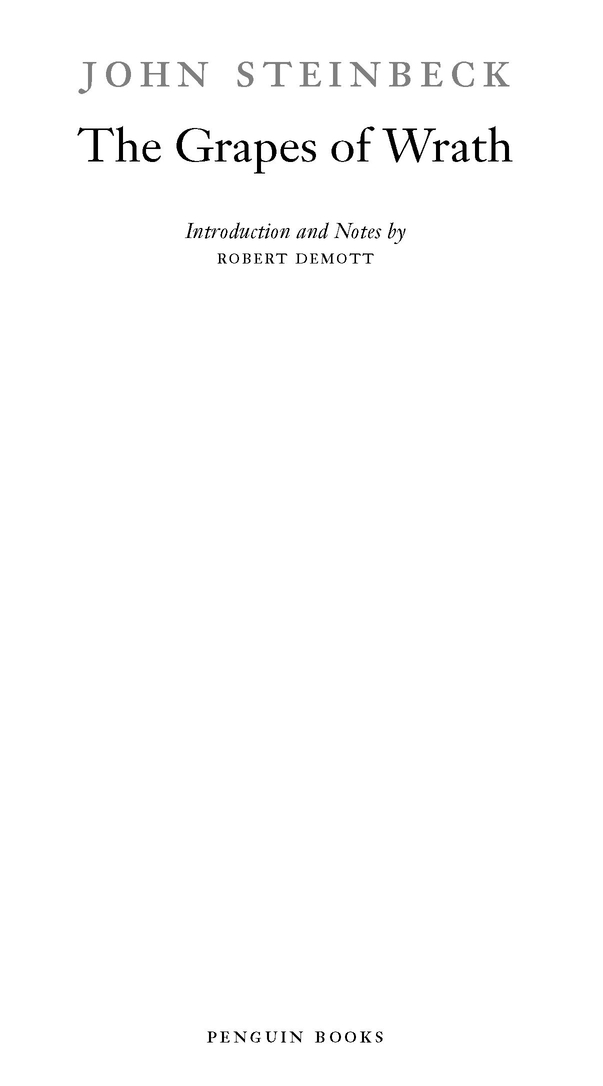Table of Contents
THE GRAPES OF WRATH
Born in Salinas, California, in 1902, JOHN STEINBECK grew up in a fertile agricultural valley about twenty-five miles from the Pacific Coastand both valley and coast would serve as settings for some of his best fiction. In 1919 he went to Stanford University, where he intermittently enrolled in literature and writing courses until he left in 1925 without taking a degree. During the next five years he supported himself as a laborer and journalist in New York City, all the time working on his first novel, Cup of Gold (1929). After marriage and a move to Pacific Grove, he published two California fictions, The Pastures of Heaven (1932) and To a God Unknown (1933), and worked on short stories later collected in The Long Valley (1938). Popular success and financial security came only with Tortilla Flat (1935), stories about Montereys paisanos. A ceaseless experimenter throughout his career, Steinbeck changed courses regularly. Three powerful novels of the late 1930s focused on the California laboring class: In Dubious Battle (1936), Of Mice and Men (1937), and the book considered by many his finest, The Grapes of Wrath (1939). Early in the 1940s, Steinbeck became a filmmaker with The Forgotten Village (1941) and a serious student of marine biology with Sea of Cortez (1941). He devoted his services to the war, writing Bombs Away (1942) and the controversial play-novelette The Moon Is Down (1942). Cannery Row (1945), The Wayward Bus (1947), The Pearl (1947), A Russian Journal (1948), another experimental drama, Burning Bright (1950), and The Log from the Sea of Cortez (1951) preceeded publication of the monumental East of Eden (1952), an ambitious saga of the Salinas Valley and his own familys history. The last decades of his life were spent in New York City and Sag Harbor with his third wife, with whom he traveled widely. Later books include Sweet Thursday (1954), The Short Reign of Pippin IV: A Fabrication (1957), Once There Was a War (1958), The Winter of Our Discontent (1961), Travels with Charley in Search of America (1962), America and Americans (1966), and the posthumously published Journal of a Novel: The East of Eden Letters (1969), Viva Zapata! (1975), The Acts of King Arthur and His Noble Knights (1976), and Working Days: The Journals of The Grapes of Wrath (1989). He died in 1968, having won a Nobel Prize in 1962.
ROBERT DEMOTT is Edwin and Ruth Kennedy Distinguished Professor at Ohio University, where he has received half a dozen undergraduate and graduate teaching awards, including the Jeanette G. Grasselli Faculty Teaching Award and the Honors Colleges Outstanding Tutor Award. He is a former director of the Center for Steinbeck Studies at San Jose State University, and served for more than three decades on the editorial boards of the Steinbeck Quarterly, Steinbeck Newsletter, and Steinbeck Studies. He is editor (with Elaine Steinbeck as Special Consultant) of the Library of Americas multivolume edition of John Steinbecks writings, of which Novels and Stories 1932-1937 (1994), The Grapes of Wrath and Other Writings 1936-1942
(1996), and Novels 1942-1952 (2001) have so far appeared. His annotated edition of John Steinbecks Working Days: The Journals of The Grapes of Wrath was chosen as a New York Times Notable Book in 1989, and his Steinbecks Typewriter: Essays on His Art (1996) received the Nancy Dasher Book Award from the College English Association of Ohio in 1998.
To CAROL who willed it.
To TOM who lived it.
Introduction
My whole work drive has been aimed at making people understand each other....
Steinbeck in a 1938 letter
Boileau said that Kings, Gods, and Heroes only were fit subjects for literature. The writer can only write about what he admires. Present day kings arent very inspiring, the gods are on a vacation, and about the only heroes left are the scientists and the poor.... And since our race admires gallantry, the writer will deal with it where he finds it. He finds it in the struggling poor now.
Steinbeck in a 1939 radio interview
I
The Grapes of Wrath is one of the most famous novels in America perhaps even in the world. When John Steinbeck wrote this book he had no inkling that it would attain such widespread recognition, though he did have high hopes for its effectiveness. On June 18, 1938, a little more than three weeks after starting his unnamed new manuscript, Steinbeck confided in his daily journal (posthumously published in 1989 as
Working Days):
If I could do this book properly it would be one of the really fine books and a truly American book. But I am assailed with my own ignorance and inability. Ill just have to work from a background of these. Honesty. If I can keep an honesty it is all I can expect of my poor brain.... If I can do that it will be all my lack of genius can produce. For no one else knows my lack of ability the way I do. I am pushing against it all the time.
Despite Steinbecks doubts, which were grave and constant during its composition, The Grapes of Wrath turned out to be not only a fine book, but the most renowned and celebrated of his seventeen novels. Steinbecks liberal mixture of native philosophy, common-sense leftist politics, blue-collar radicalism, working-class characters, homespun folk wisdom, and digressive narrative formall set to a bold, rhythmic style and nervy, raw dialoguequalified the novel as the American book he had set out to write. The novels titlefrom Julia Ward Howes Battle Hymn of the Republicwas clearly in the American grainand Steinbeck, a loyal Rooseveltian New Deal Democrat, liked the song because it is a march and this book is a kind of marchbecause it is in our own revolutionary tradition and because in reference to this book it has a large meaning, he announced on September 10, 1938, to Elizabeth Otis, his New York literary agent.
After its arduous composition from late May through late October 1938 (Never worked so hard in my life nor so long before, Steinbeck told Carl Wilhelmson), The Grapes of Wrath passed from his wifes typescript to published novel (Vikings designers set the novel in Janson type-face) in a scant four months. In March 1939, when Steinbeck received copies from one of three advance printings, he told Pascal Covici, his editor at The Viking Press, that he was immensely pleased with them. The novels impressive physical and aesthetic appearance was the result of its imposing length (619 pages) and Elmer Haders striking dust jacket illustration (which pictured the exiled Joads looking down from Tehachapi Pass to lush San Joaquin Valley). Steinbecks insistence that The Grapes of Wrath be keyed into the American scene from the beginning by reproducing all the verses of Battle Hymn, was only partly met: Viking Press compromised by printing the first page of Howes sheet music on the books endpapers in an attempt (unsuccessfully, it turned out) to deflect accusations of communism against the novel and its author.


